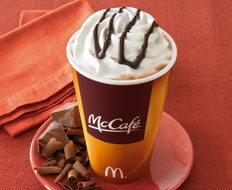What do Bic underwear, Harley-Davidson wine coolers, and Jamba Juice soup have in common? They’re all ways companies have tried to extend their brands—and they all failed.
It shouldn’t have been a surprise that the rough and manly image of the Harley brand wouldn’t fit with the light and girly product attributes of a wine cooler, but the fates of other brand extensions are harder to predict.
Back in 2001, Apple’s move from a long history of making computer products into portable digital music devices and an online music service seemed like a big risk. But 10 years later, who can argue with the phenomenal success of Apple’s brand extensions? Closer to home, many in the industry (including myself) questioned the wisdom of McDonald’s McCafé introduction. Did McDonald’s really think it could make any headway against Starbucks? But with the company recently crediting its coffee line-up for increasing net income 2 percent, we now stand corrected.
Brand extensions can indeed fuel significant growth. They can add excitement to a sluggish business and generate traffic. But given the long list of failed extensions, determining whether or not to extend your brand is not an easy decision. Beyond that, you must plan the what and the how of the extension very carefully.
Trust me, brand extensions always end up requiring more time and resources than you expect. So rather than jumping into an extension, you want to make sure you’re getting all the growth out of your existing concept first. Have you optimized your menu mix? Have you explored the full range of new products within your existing product lines? Could you increase sales simply by executing on your existing brand better? Maybe growing your existing business is easier and a safer bet.
Also, take a close look at your existing resources—people, money, systems, and so on. Does your staff have the skill set to deliver the new concept? Do you have the marketing budget to adequately promote it? What new back-of-the-house systems (supply chain, maintenance, labor planning) are required? Ensure you have what you need or are willing to cut into your profitability to get there.
Brand extensions can also take many forms—new product lines (e.g., Baskin-Robbins’ soft serve), new dayparts (Subway’s foray into breakfast), new formats (Denny’s Fresh Express), or new concepts (Chipotle’s Asian-themed concept still in development). For each type of brand extension, you have many options—Baskin-Robbins could have chosen ice cream cupcakes, gelato, or nonfrozen desserts to extend its brand into new product lines, for example.
The right brand extension depends on brand fit and brand depth. The new offering should fit with the existing brand identity. Does it deliver similar meaning and value? Is the relevance of the new offering clear? Do the personality and character of the brand still apply? Without brand fit, the extension will be confusing and you may weaken existing brand equity.
The extension should also leverage the depth of the existing brand identity. Your brand identity is like a character in a story—if a brand has depth, it has many layers to unpeel through extensions. Like a hero who headlines a blockbuster movie, a brand must captivate its audience’s imagination. Subsequent incarnations (that is, extensions) should feed on that audience’s desire to know more about it—or in the case of restaurants, experience it in new ways.
The folks at Souplantation, the 110-plus-unit salad buffet chain, recently launched a new concept, Souplantation Express. It leverages the depth of the Souplantation brand identity, enabling customers to experience choice in a whole new way. Rather than going through a buffet, customers have their salads assembled at a prep station by crew members, customizing their dish by pointing at ingredients. So be sure to ask yourself: Does your new offering engage customers in a new dimension of your brand story?
The best way to execute a brand extension is to be clear about who your target audience is. Are you trying to reach new customers who may not be attracted to your existing offering? If so, then your best bet is to use a different name and logo and keep the linkage to your existing brand to a minimum.
Or do you want the brand extension to appeal to your existing customers in different occasions or situations? If that’s the case, highlight the ties to your existing brand. In developing Souplantation Express, the company kept the Souplantation name and the familiar logo and colors because it wanted to appeal to existing customers who are looking for a to-go or faster meal option.
The most important question to ask is a question about the brand itself: How will you sustain brand strength in the core business? Will you still invest in it through innovation, marketing support, and solid execution?
It’s easy to get distracted by all the excitement of a brand extension, but you can’t neglect the original brand. You need to keep it fresh and invest in the customer experience. If you do, you’ll have even more power to drive a successful brand extension.










